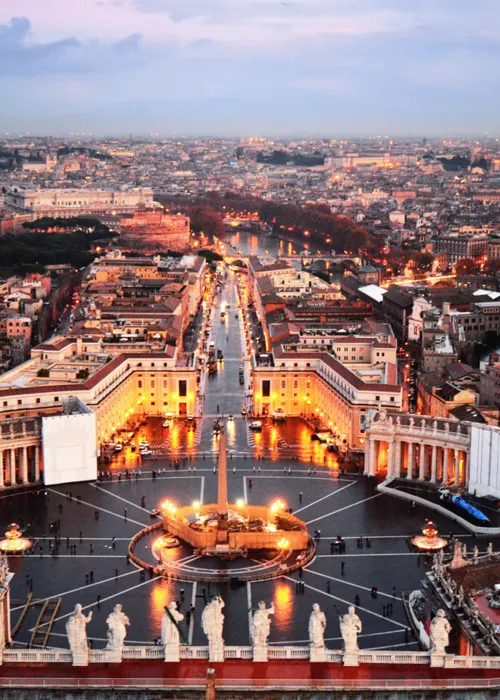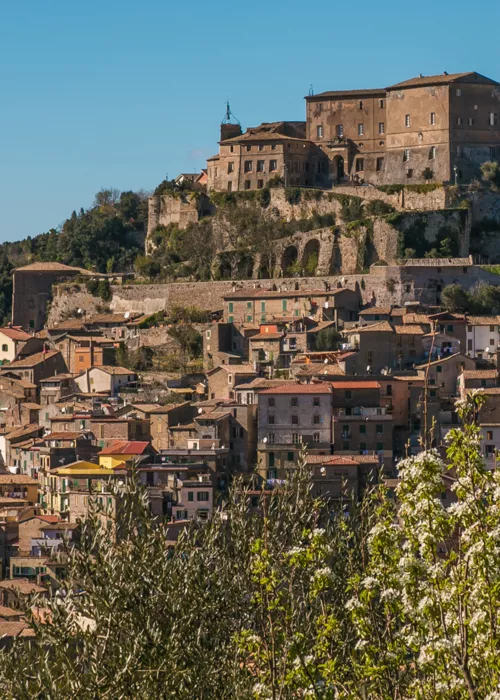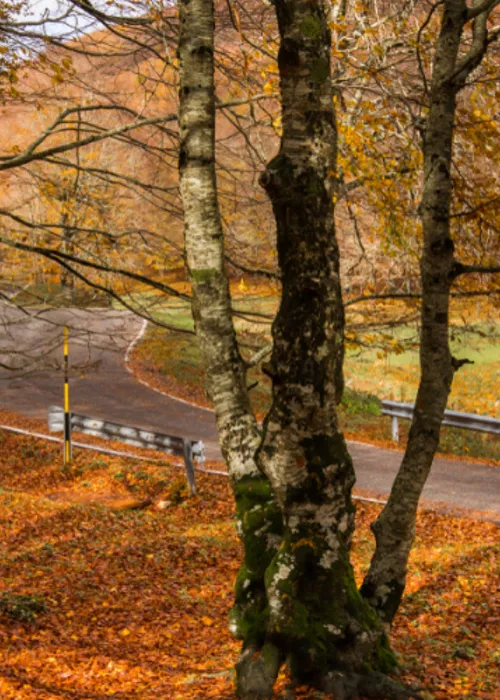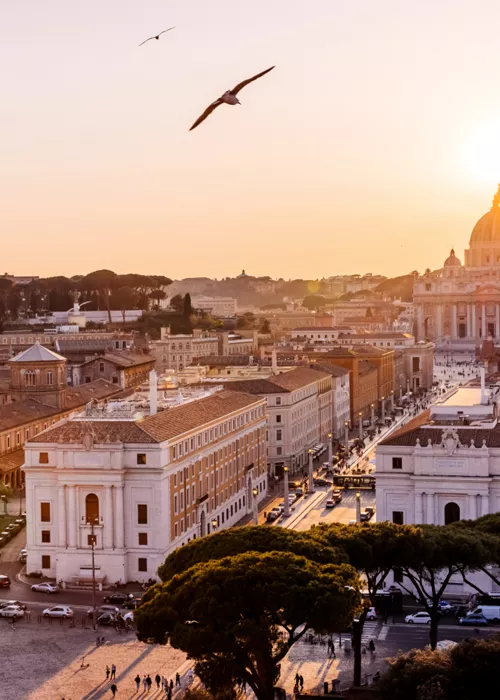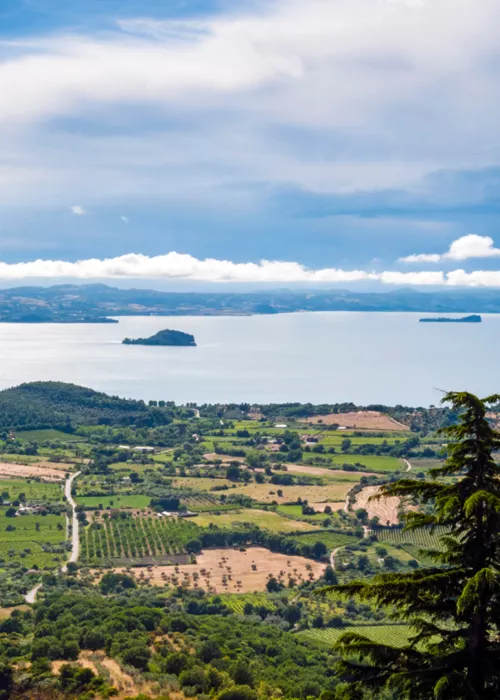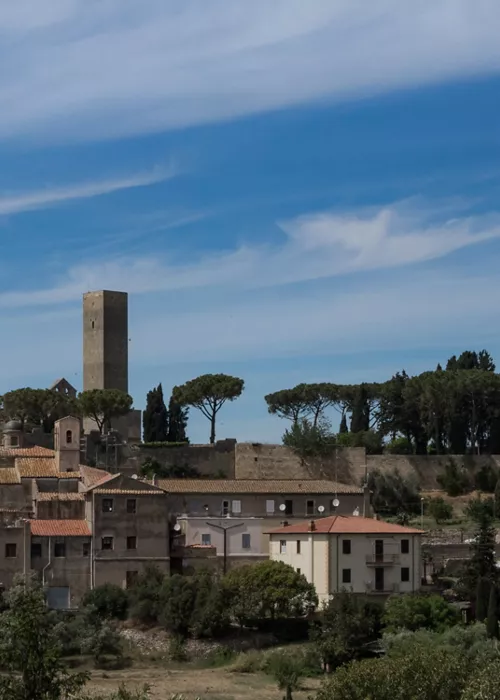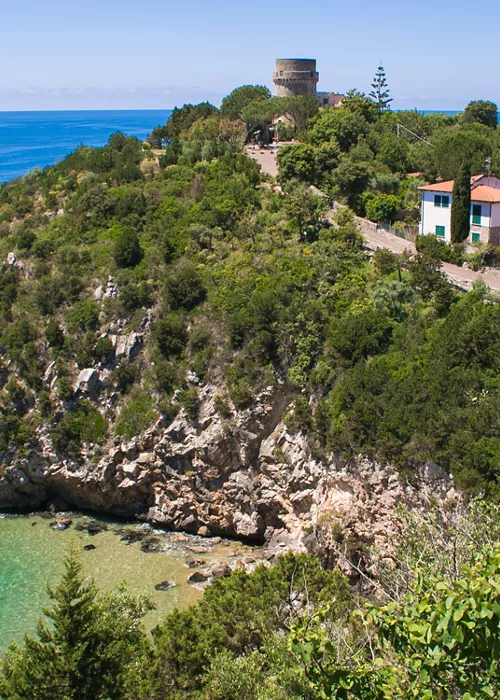Around Piazza Vittorio Emanuele II

Piazza Vittorio Emanuele II, commonly abbreviated as Piazza Vittorio is even larger than St. Peter's Square, and is the hub of the Esquiline district and the multicultural community that has populated it since the 1960s, when a small Chinese community settled there. Now there are numerous communities from all over the world, a teeming mosaic of colours and cultures that requires care to preserve its delicate balance, but gives the district a valuable cosmopolitan flavour, visible, for example, in the New Esquilino Market, a stone's throw from Piazza Vittorio, which is an authentic experiment in gastronomic multiculturalism.
The square was opened in 1880, along with the surrounding blocks, the day after the capital of Italy was transferred from Florence to Rome. The construction of this vast space, in particular, required extensive demolition and excavation work. One can get a glimpse of this by observing the façade of the Church of Sant'Eusebio all'Esquilino, on the corner with Via Napoleone III: the double flight of steps in front of it was added in order to compensate for the difference in height.
As you walk through the streets between Piazza Vittorio and Termini station, the multifaceted urban fabric of the district reveals some of its faces. In the gardens of Piazza Manfredo Fanti you will find the splendid Roman Aquarium, a classical building of the late nineteenth century, now a venue for exhibitions and events related to contemporary architecture. Along Via Giolitti, which flanks Termini station, you will find the historic Ambra Jovinelli Theatre, restored to its former glory, and the precious basilica of Santa Bibiana, a fundamental example of Baroque. Also in Via Giolitti, at number 225, you will be impressed by a series of beautiful works of street art.
From Piazza Vittorio towards the basilica of St. Mary Major, along Via di San Vito, you will instead come across the remarkable Arch of Gallienus, an Augustan reconstruction of the Porta Esquilina gateway that opened in the Servian Wall.
The Basilica of St. Mary Major and Via Merulana

From the gardens of Piazza Vittorio, along the tree-lined perspective of Via Carlo Alberto, you can already see in the distance the dome and the Romanesque bell tower of St. Mary Major. In fact, the basilica stands on the top of the Cispio, one of the three elevations of the Esquiline Hill, the slope of which is particularly visible in Piazza Esquilino, towards which the beautiful rear apse faces.
Another view point from which the complex can be admired is the nearby Via Merulana, which was opened for the Jubilee of 1575 to act as a choreographic setting for the processions. This long and busy thoroughfare, which today separates the Esquiline and Monti districts, enjoys a prominent role in Italian literature because Carlo Emilio Gadda (1893–1973) used it as the setting of the "awful mess" around which his most famous novel ("That Awful Mess on Via Merulana") is based: at number 219, to be precise, as commemorated by a plaque on the building at the corner of Via Poliziano.
At number 244 stands the Brancaccio Theatre. Built in 1916 with decorations by Adolfo Coppedè, the theatre has seen performances by Aldo Fabrizi, Anna Magnani and Gigi Proietti, who was also its artistic director. Today, it offers a refined programme of prose, musicals, music and dance. Opposite, the low masonry building on Largo Leopardi is known as the Auditorium of Mecenate, a vast rectangular semi-subterranean hall containing remains of 1st-century paintings.
Around the Basilica of the Holy Cross in Jerusalem

The Basilica of the Holy Cross in Jerusalem, a station in the Pilgrimage of the Seven Churches, is at the centre of a stratified urban fabric unique to Rome, with monumental Roman architecture standing out among modern buildings, busy intersections and rattling trolley buses.
Here, in fact, stretched the vast imperial estate of the Sessorio Palace, a large country villa which, emperor after emperor, was enlarged and provided with facilities and entertainments. Septimius Severus built the Circus Varianus next to it for chariot races, although few traces of it now remain. To Elagabalus we owe the Castrensis Amphitheatre, still visible next to the basilica. Helena, mother of Constantine, endowed the complex with the Baths of Helena, whose cistern can be seen along Via Eleniana, and a primitive Basilica of the Holy Cross in Jerusalem.
But the archaeological area is also home to modern buildings. Behind the basilica, there are three museums, the National Museum of Musical Instruments, the Infantry Museum and the Historical Museum of the Grenadiers of Sardinia.
Another landmark in the area is the Aurelian Walls, which surround the capital for 12.5 kilometres and are clearly visible and in magnificent condition here, with the travertine Porta Maggiore gateway stretching like a theatrical backdrop between Piazza Porta Maggiore and Piazza Labicano.
Just a few steps along Via Giolitti, you will find the umpteenth jewel of the classical era, the Temple of Minerva Medica: dating back to the first decades of the fourth century and with a dodecagonal plan, it was originally covered by a dome 25 metres in diameter, at the time only smaller than those of the Pantheon and the Baths of Caracalla.
Basilica di Santa Croce in Gerusalemme, Piazza di S. Croce in Gerusalemme, 10, 00185 Roma RM, Italia
The Basilica of St. Lawrence Outside the Walls and its district

On the opposite side of Termini station from the Esquiline district extends another popular district with a great personality and a certain bohemian and underground charm. Thanks to its proximity to La Sapienza University, the Polyclinic and the CNR, San Lorenzo is, in fact, one of Rome's hubs of student life, full of meeting points, restaurants and pizzerias, with an intense nightlife, especially around Piazza dell'Immacolata.
The result of urbanisation at the end of the 19th century, when Rome became the capital of the new Kingdom of Italy, the district extends beyond the Aurelian Walls, as attested by the Basilica of St. Lawrence Outside the Walls, also a station in the Tour of the Seven Churches (another way of indicating the Pilgrimage of the Seven Churches). The church is also known as San Lorenzo al Verano due to the nearby Verano Monumental Cemetery, opened following the Napoleonic edict of 1804 that prohibited burials in inhabited centres. It is open to visitors. Today the Verano is a veritable open-air museum with monumental tombs of great artists of the 19th and 20th centuries and many tombs of notable figures of culture and entertainment, a place that never ceases to attract fans who pay homage to them.







